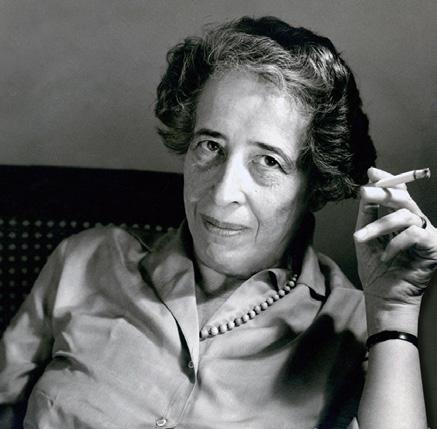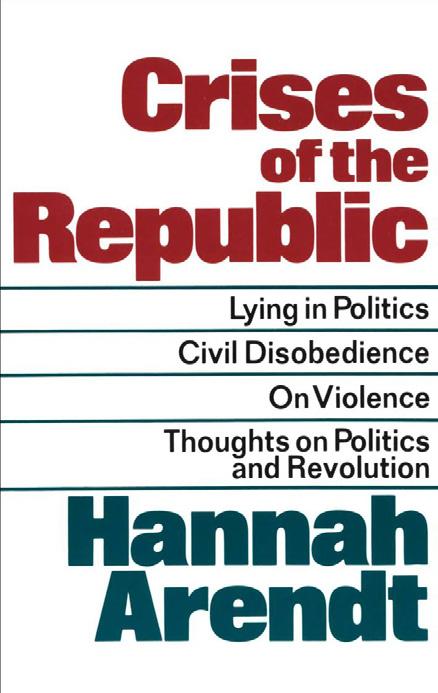
2 minute read
CIVIL DISOBEDIENCE
by ibpunion
Arendt’s essays are always about more than their title would suggest. This essay, as the rest under the collection of the Crises of the Republic, is perhaps the most faithful to her credo “to think what we are doing.”
The essay centres on rescuing the place of the civil disobedient’s appeal from Henry David Thoreau’s subjective conscience that served as the motivation for so many during the protest of the late 60’s when she wrote it. But looking deeper, it is an account of a particular view of democracy and what she saw as the spirit of the American system. In the act of civil disobedience lies the confirmation of the promise and consent inherent in the American system. Civil disobedience paradoxically affirms the general system of laws in its attempt to refound it.
Advertisement
While the Lockean subject could justify his disobedience with an “appeal to heaven” or Antigone her disobedience to Creon invoking a tragic vow to the Gods to bury her brother, such defences are rendered incoherent as natural law loses its place. So too does Thoreau’s argument for civil disobedience unravel as his invocation of conscience seems hopelessly self-indulgent: the individual’s motive is wholly private, opaque to the broader community and can only show its truthfulness in an ultimately self-defeating act of self-sacrifice. The civil disobedients, then, are instead cast as another kind interest group who can appeal to the common opinion of the group. The community of the interests they represent appears as the last remnant of the moral associa- tions Tocqueville saw as the bedrock of the American system. Civil disobedience itself “is compatible with the spirit of American laws” she states, as she advocates for constitutional protection of civil disobedience.

Stylistically, it is as Arendtian as any of her other works - including the nearly excessive use of foreign languages, as you are always reaching out for a dictionary to translate the obscure Latin or Greek phrases that often evoke an image so central that missing it compromises one’s whole reading. As her essays are prone to be, it is dense and the difficulty of reading satisfactorily is immense. There are countless allusions and references as she builds on a conceptual apparatus she has built up through the rest of her works, notably “The Human Condition” in this one. Arendt restlessly shifts lenses, as the essay goes in one breath from legal analysis to Kantian aesthetics all with a clear phenomenological tint. But in the end, it is no doubt worth bearing through for a highly original and idiosyncratic understanding of the nature of consent, of morality, politics and the very nature of citizenship and participatory democracy.
The recent revival of this essay pointing towards apparent surges in civil disobedience to explain its relevancy miss the broader picture. Arendt’s Civil Disobedience is about more than explaining the phenomenon of civil disobedience. At the heart of it is a timeless account of the underlying nature of democratic politics and how it can deal with change.









